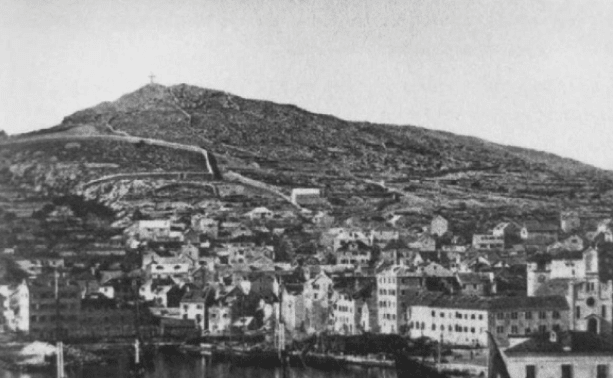A look at the many names of Marjan courtesy of the Facebook page Society of Friends of Cultural Heritage in Split.
There is so much we can say about Marjan hill. A true symbol of the city of Split, we often refer Split as the "city under the hill" and consider Marjan the green lungs of the city. While we can't get enough of Marjan, whether we walk it, bike it, or simply admire it from afar, how much do you really know about the history of this Split icon?
Today, we take a look at the many names of Marjan hill.
Marjan - the most famous hill high above the western side of the Split peninsula - was first mentioned under the name 'Marulianus' in the 8th century.
Later on, in a document titled “Prestancija Basamurina” from 1119, the hill was named the land of "Murnano" (Novak, 1924-25).
The name for ‘Marjan’, however, appears in many different forms including Murmiano (probably intended to be Murniano), Marnano, Mernan, Merlano, Mergnan and Mergnano. The name Marinianum was no longer merely the sole property of Marinianus (Marinus), but an area where there were several owners - and since the name no longer signified property, it appeared in various distorted forms. Domestic residents, especially those from Varoš, have until recently used the variant Mrjan and even Merjan.
In the past, the southern, fertile hillsides of Marjan were referred to as (and translated literally as) ’mountain hair’. Thus, in the Chronicle of Split by Thomas Archduke, he quotes Marjan as "Mons Kyrieleison", a name the hill was given according to ritual ceremonies done during the blessing of fields when litanies were sung.
In the Split Statute (1878,175-176), another name appeared that has completely disappeared today - Mons Seranda or simply Seranda (Saranda) and Serra, mentioned during the time the church of Sv. Nikola (St. Nikola de Serra) was built in 1219.

Split kroz povijest
This name Marjan as we know it was ultimately given because it was forbidden to harvest wood and breed cattle on the hill, and in the transmitted sense, it was closed. This explains the names Seranda and Serra, which originate from the Italian verb "close", (Rossi, 1989, 12).
The Split peninsula was important for Salona primarily because of the fields that were the basis of the agricultural activity for the population of Salona. It was also essential for the natural protection of the Salonitian port, whose entrance was marked by rt Marjan, where Diana’s temple was located, 7 meters long and drawn on Peutinger’s Map. The location was recorded as "ad Diana", and today, the name rt Marjan is called Rt or Punta Sv. Jure because of the early medieval church of Sv. Jure built close to the remains of Diana's temple.
How Marjan was once protected and respected can be seen not only by the name Seranda, but also by the remains of Diana's temple, goddess of the hunt, the moon, and nature in Roman mythology.
Because we are so lucky to have Marjan as a pearl of Split, why not take advantage of its green lungs today?

